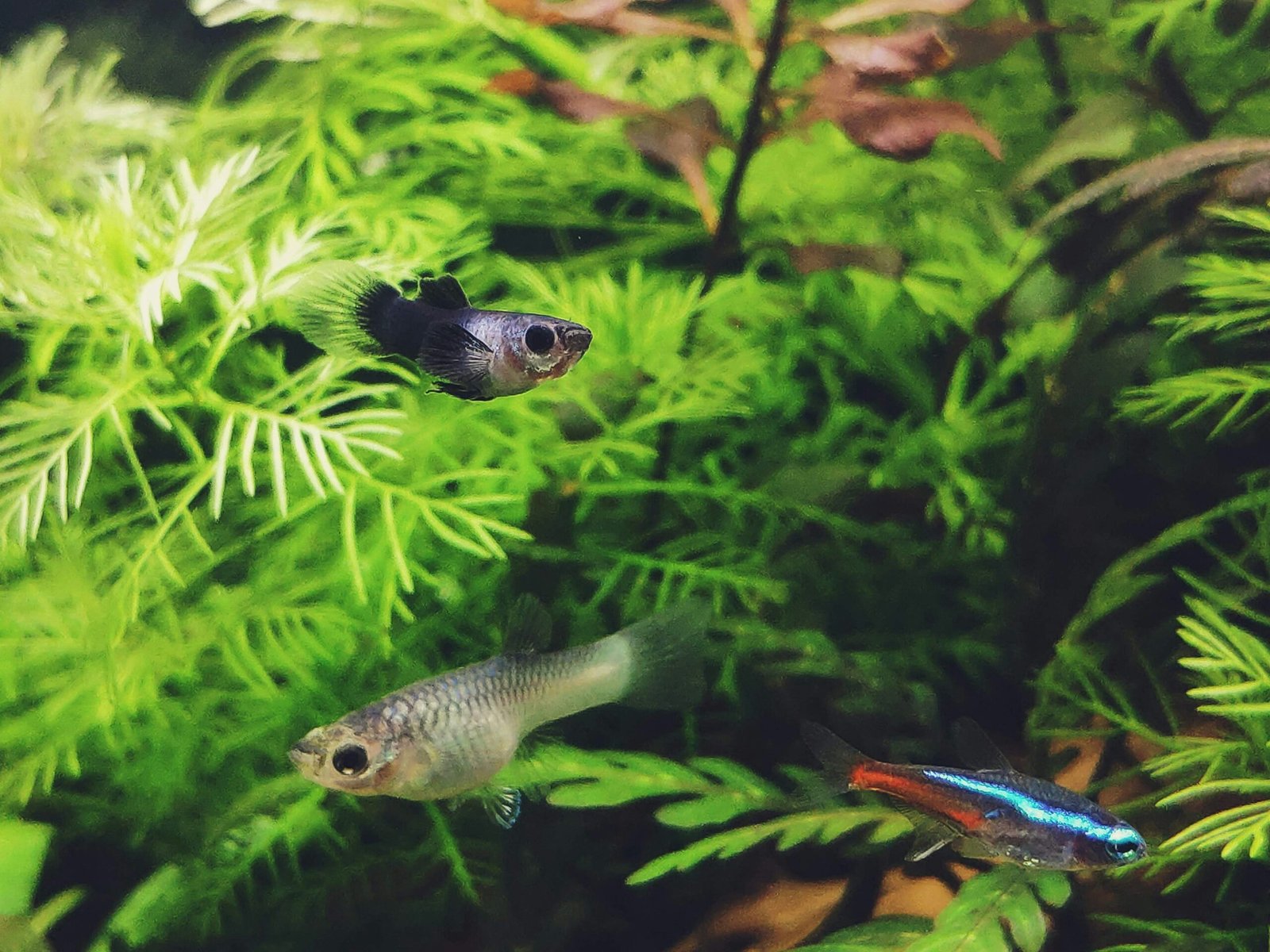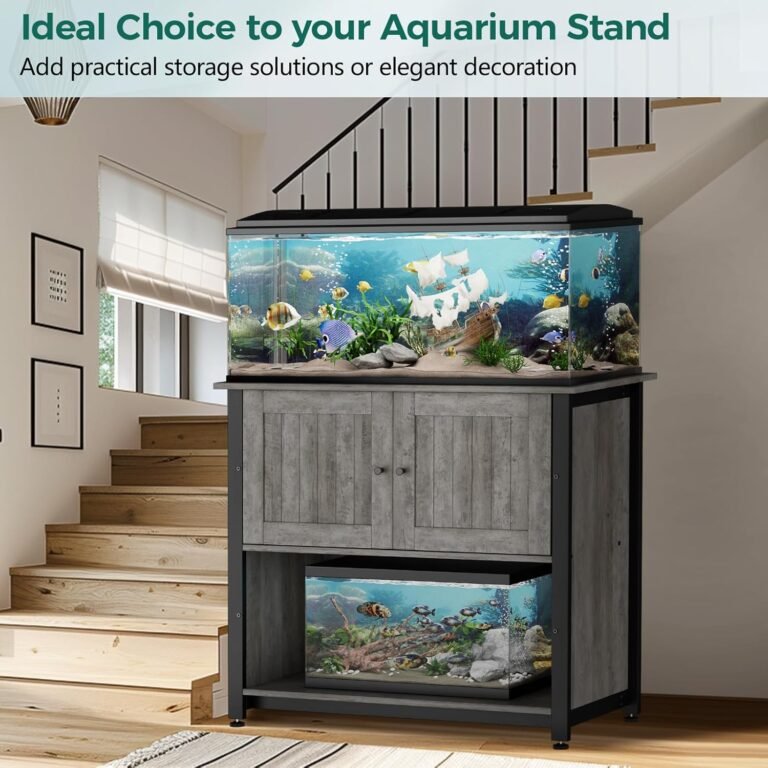When you start aquascaping, you’ll need some special tools to help you create a beautiful underwater world for your fish and plants. These tools include things like tweezers, scissors, and a gravel vacuum. Tweezers help you plant tiny plants without hurting them, while scissors let you trim them so they don’t get too big. A gravel vacuum helps keep the bottom of your tank clean, making sure your underwater garden stays healthy. With these essential tools, you’ll be all set to make your aquarium look like a magical underwater forest! Have you ever wondered what it would be like to create your very own underwater garden? Imagine a beautiful aquatic landscape, filled with plants, rocks, and maybe even some cute little fish swimming around. This magical world is called “aquascaping,” and if you’re curious about how to get started, this guide will introduce you to the essential tools you’ll need as a beginner.
What is Aquascaping?
Aquascaping is the art of arranging aquatic plants, rocks, stones, cavework, or driftwood, in an aesthetically pleasing manner within an aquarium. It’s like creating a miniature underwater world where everything looks perfect and in harmony. People of all ages enjoy it because it’s both a fun and calming hobby.
Why is Aquascaping Popular?
Aquascaping has gained a lot of popularity recently. It’s not only about making your aquarium look beautiful; it’s also about creating a healthy environment for your fish and plants to thrive. Plus, it can be a very relaxing and satisfying pastime, watching your mini underwater garden flourish.

The Magic Behind Aquascaping: Essential Tools
To become a successful aquascaper, you’ll need some special tools. Think of these tools as the magic wands for your underwater garden. They’ll help you plant, trim, and arrange everything just perfectly. Here are the most essential tools that every beginner should have.
Planting Tongs
Planting tongs, also called tweezers, help you plant seeds and small plants in your aquarium. They are long and thin, allowing you to place plants exactly where you want them without disturbing the rest of your setup.
| Tool | Purpose |
|---|---|
| Planting Tongs | Help in planting seeds and small plants |
Aquatic Scissors
Just like plants in your garden need trimming, so do the plants in your aquarium. Aquatic scissors are specifically designed for this job. They are curved to make it easier to reach tricky spots, so you can keep your aquarium looking neat and tidy.
| Tool | Purpose |
|---|---|
| Aquatic Scissors | Used for trimming and shaping plants |
Algae Scraper or Magnet Cleaner
Algae growth can make your aquarium look dirty. An algae scraper or magnet cleaner helps keep the glass clean. This tool makes sure that everyone can see your beautiful underwater garden clearly, without any green stuff getting in the way.
| Tool | Purpose |
|---|---|
| Algae Scraper/Magnet Cleaner | Keeps the aquarium glass clean from algae |
Substrate Spatula
A substrate spatula is like a tiny shovel for your aquarium. It helps you move the sand, gravel, or soil smoothly around your tank. This tool is especially useful when you’re trying to create hills and valleys in your underwater world.
| Tool | Purpose |
|---|---|
| Substrate Spatula | Helps in moving and smoothing the aquarium substrate |
Aquascaping Glue
Sometimes, you’ll need to attach plants to rocks or wood. Aquascaping glue is specially made for underwater use, and it helps keep everything in place. Just a small drop can secure your plants where you want them to be.
| Tool | Purpose |
|---|---|
| Aquascaping Glue | Helps in attaching plants to rocks or wood |
Water Testing Kit
Keeping your underwater garden healthy requires checking the water quality frequently. A water testing kit is like a doctor’s kit for your aquarium. It lets you measure things like pH levels, nitrites, nitrates, and ammonia, ensuring your water is safe for both plants and animals.
| Tool | Purpose |
|---|---|
| Water Testing Kit | Checks water quality parameters like pH, nitrites, and ammonia |
Aquarium Net
An aquarium net is useful for removing debris, uneaten food, or even catching fish when you need to move them around. It’s a simple but important tool to keep your tank clean and your fish happy.
| Tool | Purpose |
|---|---|
| Aquarium Net | Used for removing debris and catching fish if needed |
Historical Context: The Origins of Aquascaping
Aquascaping has an interesting history that goes back hundreds of years. The art of gardening in water dates to ancient Japan with their beautiful Koi ponds and water gardens. But the modern form of aquascaping started in the 20th century.
The Nature Aquarium Style
The Nature Aquarium style is one of the oldest and most popular forms of aquascaping, created by Takashi Amano in the 1990s. He used elements from traditional Japanese gardening techniques and added his unique touch to create stunning underwater landscapes that mimic the natural world. This style uses plants, stones, and driftwood to create scenes inspired by nature, often resembling forests, mountains, or even simple landscapes.
The Dutch Style
Another important style in aquascaping history is the Dutch style, which began in the Netherlands around the 1930s. This style focuses on colorful plants arranged in rows or layers to create depth. Unlike the Nature Aquarium Style, Dutch aquascaping avoids rocks and wood, emphasizing the plants’ beauty instead.
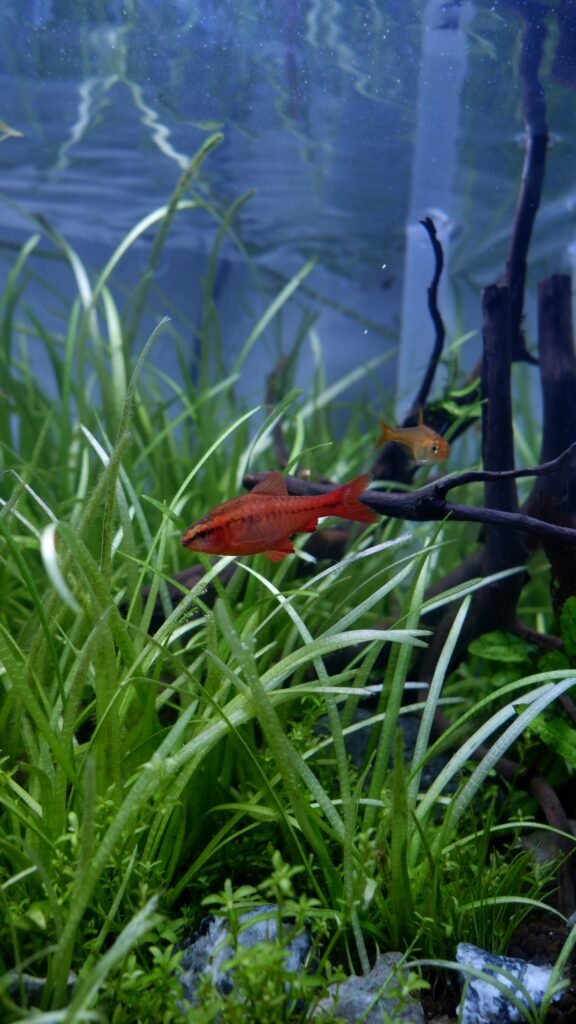
Current Trends: What’s Hot in Aquascaping?
Today, aquascaping continues to evolve, with new styles and techniques emerging all the time. Here are some current trends that you might find inspiring.
Iwagumi Style
The Iwagumi style is a minimalist approach that focuses on the placement of stones. In this style, usually an odd number of rocks are used, creating a natural, balanced look. The rock placement symbolizes simplicity and tranquility.
Biotope Aquariums
Biotope aquariums aim to replicate a specific natural environment, like the Amazon River or an African lake. This trend emphasizes creating an ecosystem that’s as close to the real thing as possible, using plants, fish, and even water conditions mimicking a particular habitat.
Key Concepts and Definitions in Aquascaping
Before diving deeper, let’s clarify some important terms you’ll often hear in aquascaping.
Key Terms
- Substrate: The material (like sand, gravel, or soil) that you place at the bottom of your aquarium.
- Hardscape: Non-living elements like rocks, stones, and driftwood that you use to design your aquarium.
- Softscape: Living elements like aquatic plants that you add to your underwater garden.
- pH Level: A measure of how acidic or basic the water is, crucial for plant and fish health.
Importance of Water Quality
Healthy water is essential for your aquascape. Plants and fish thrive in specific water conditions. A water testing kit can help you monitor the quality of your water to ensure it’s just right for your underwater garden.
Types of Plants
Aquascaping plants come in three main categories:
- Foreground Plants: These are the smallest plants and are placed at the front. Examples include Java Moss and Dwarf Baby Tears.
- Midground Plants: Slightly taller plants placed in the middle of the aquarium. Examples include Anubias and Java Fern.
- Background Plants: These are the tallest plants, placed at the back. Examples include Vallisneria and Amazon Sword.
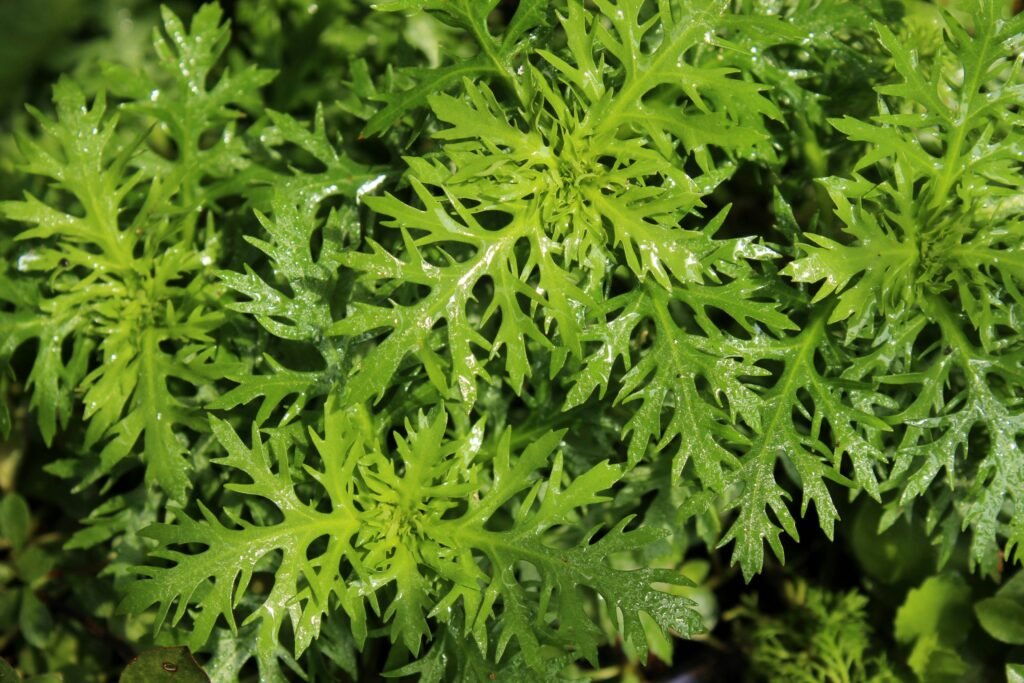
Detailed Exploration: Diving Deeper into Aquascaping Tools
Let’s take a closer look at each of these essential tools and see how they help you create a stunning underwater garden.
Planting Tongs: A Closer Look
Planting tongs come in various shapes and sizes. Some are straight, while others have a curved tip. The curved ones are especially great for reaching tricky corners. Using tongs, you can plant delicate aquatic plants without damaging them or disturbing the substrate.
Aquatic Scissors: Keeping Things Trimmed
Whether you have long flowing plants or short carpet plants, you’ll need to trim them regularly to keep everything looking neat. Scissors with curved blades are specifically designed for trimming plants at different angles. They help you achieve the desired shape and encourage healthy growth by removing dead or overgrown parts.
Algae Scrapers and Magnet Cleaners: Keeping It Crystal Clear
Algae can grow on the glass of your aquarium, making it look dirty. Regular scrubbing with an algae scraper can keep your aquarium crystal clear. Magnet cleaners have two parts: one goes inside the tank and the other stays outside. By moving the magnet on the outside, you can clean the inside glass without getting your hands wet.
Substrate Spatula: Sculpting the Underwater Landscape
Imagine sculpting your own underwater hills and valleys. A substrate spatula helps you shape the substrate to create a visually appealing landscape. Whether it’s making smooth slopes or carving out valleys, this tool is indispensable for neat and accurate substrate arrangement.
Using Aquascaping Glue the Right Way
Aquascaping glue comes in handy when you need to attach plants to rocks or wood. It’s especially useful for creating vertical gardens on driftwood or stones. A small amount goes a long way, and it sets quickly, ensuring that your plants stay in place even underwater.
Mastering the Water Testing Kit
Water quality is like the backbone of your aquascape. A water testing kit checks crucial parameters like pH, nitrite, nitrate, and ammonia levels. Maintaining these within the optimal range ensures a healthy environment for your plants and fish.
Aquarium Net: More Than Just a Fish Catcher
While primarily used for catching and moving fish, an aquarium net can also help remove uneaten food or debris. Regular use of an aquarium net can keep your tank looking clean and help maintain the health of your aquatic life.
Example 1: Starting Your First Aquascape
Let’s walk through an example of setting up your very first aquascape to understand how to use these tools effectively.
Choosing the Right Substrate and Plants
First, choose a suitable substrate. If you plan to grow many plants, a nutrient-rich substrate is beneficial. Pour the substrate into the tank and use the substrate spatula to create your desired landscape, maybe a little hill on one side and a valley on the other.
Setting the Hardscape
Now it’s time to add rocks and driftwood, forming the hardscape. Place them carefully to create a balanced look. If a piece of driftwood keeps floating up, you can use aquascaping glue to attach it to a rock.
Planting: The Fun Begins!
Use planting tongs to carefully place your chosen plants. Start with foreground plants, then add midground plants, and finally add the background plants. Make sure to plant them deep enough so they don’t float away but not too deep to damage their roots.
Initial Water Testing
Fill your tank with water and use the water testing kit to make sure everything is in balance. Check the pH, nitrite, nitrate, and ammonia levels. Adjust as necessary for optimal conditions.
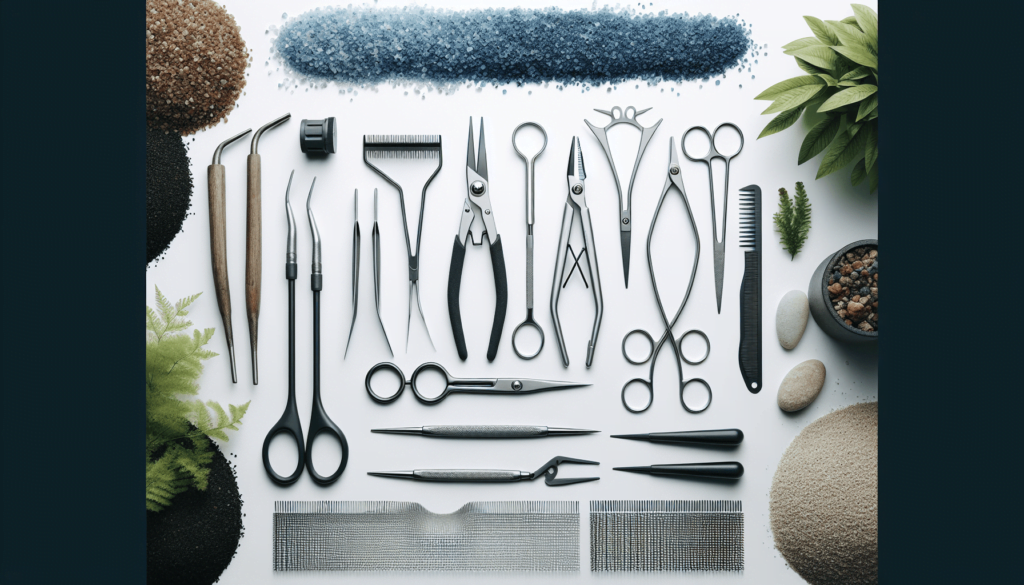
Example 2: Maintaining Your Aquascape
An aquascape isn’t just something you set up and leave; it requires regular maintenance to stay beautiful and healthy.
Regular Trimming
Use aquatic scissors to trim overgrown plants, ensuring that shorter plants like foreground species get enough light. Trim the stems diagonally to encourage new growth.
Fighting Algae
Use your algae scraper or magnet cleaner to remove any algae from the glass. Regular cleaning prevents the algae from taking over your tank.
Routine Water Testing
Make a habit of testing your water weekly using the water testing kit. This will help you catch any potential issues early before they harm your plants or fish.
Cleaning and Filtering
Use an aquarium net to remove any debris, uneaten food, or dead plant material. Keeping the filter clean also ensures a healthy environment for your aquatic life.
Comparison of Different Perspectives
While there are multiple ways to approach aquascaping, let’s compare two popular styles: The Nature Aquarium style and the Dutch style.
Nature Aquarium Style
- Focus: Natural look, inspired by landscapes.
- Main Elements: Rocks, driftwood, and live plants.
- Plant Arrangement: Mimics nature, often irregular but harmonious.
- Maintenance: Requires regular trimming and water testing.
Dutch Style
- Focus: Color and plant health.
- Main Elements: Colorful aquatic plants, no hardscape like rocks or wood.
- Plant Arrangement: Organized in rows or layers for depth.
- Maintenance: High maintenance with frequent trimming and plant care.
Which Style Suits You?
If you love the look of a natural landscape with stones and driftwood, you might favor the Nature Aquarium style. On the other hand, if colorful plant arrangements appeal to you, a Dutch-style tank might be more your speed.
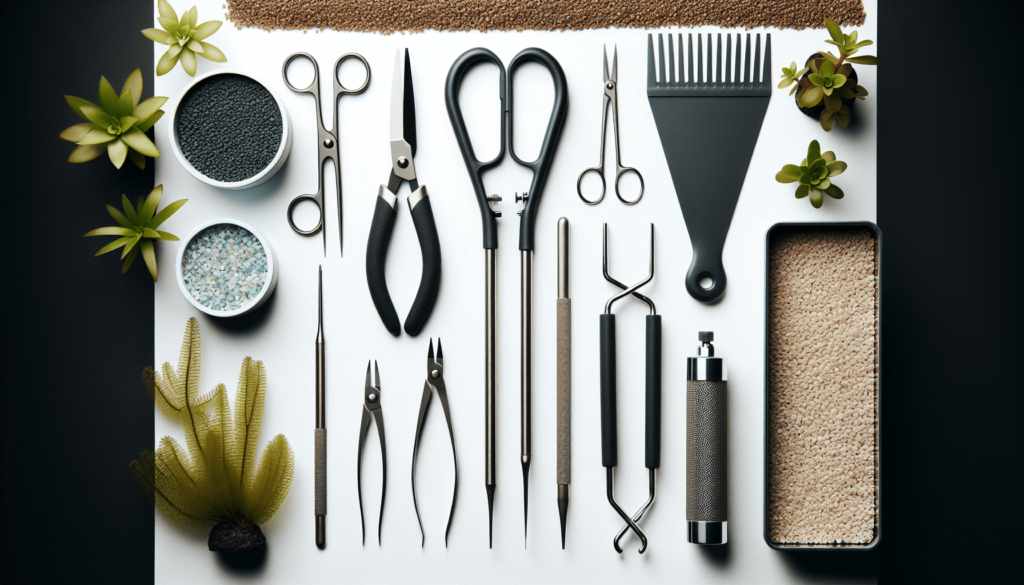
Impact Assessment: Benefits of Aquascaping
For Mental Well-being
Aquascaping is more than just a hobby; it’s a therapeutic activity that helps reduce stress. Watching your underwater garden grow can be incredibly satisfying and calming.
For Education
Aquascaping can also be educational. It teaches you about ecosystems, water chemistry, and plant biology. It’s a great way to learn science hands-on.
For the Environment
Creating a healthy aquascape means you’re also creating a small, balanced ecosystem. This balance can teach us a lot about environmental care and responsibility.
Future Directions and Implications
Technology Integration
With advancements in technology, future aquascapes might incorporate more automated systems for water testing and plant care. Smart aquariums that monitor conditions in real-time could revolutionize the hobby.
Greater Accessibility
As more people become interested in aquascaping, we can expect more affordable and user-friendly tools and kits. This will make it easier for beginners to get started.
Environmental Awareness
Aquascaping can also raise awareness about environmental issues. Proponents of biotope aquariums often advocate for preserving natural habitats, emphasizing sustainable practices in aquascaping.
Conclusion
Recap
Getting started in aquascaping means equipping yourself with essential tools like planting tongs, aquatic scissors, algae scrapers, substrate spatulas, aquascaping glue, water testing kits, and aquarium nets. Understanding different styles and keeping up with maintenance will ensure that your underwater garden not only looks stunning but remains healthy too.
Final Thought
Now, think back to the intriguing world of aquascaping. Imagine the joy and satisfaction of creating your very own underwater paradise, watching each plant grow and flourish. Isn’t it fascinating how a few simple tools can help you achieve such beauty?
Engagement
Curious about getting started? Feel free to leave a comment with any questions you might have, or share your own aquascaping experiences. We’re excited to hear from you and to help you start your aquascaping journey!
Credible Sources
To learn more about aquascaping, check out these credible sources:
- The International Aquatic Plants Layout Contest (IAPLC)
- Amano, Takashi. Nature Aquarium World. TFH Publications, 1994.
- “Aquascaping: A Step-by-Step Guide”
Happy aquascaping!
